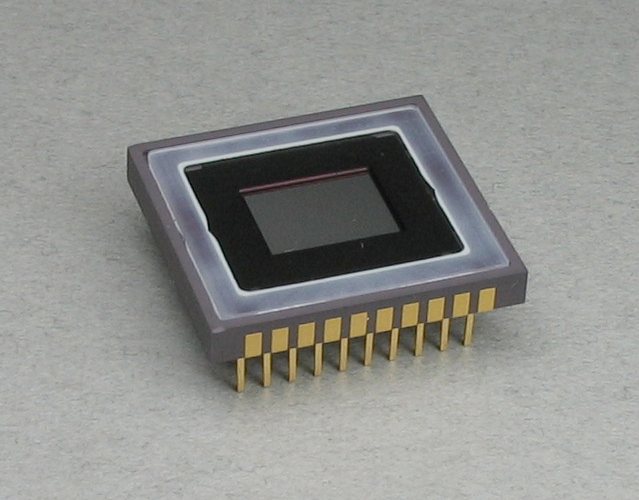CCD Cameras

Credit: Wikimedia user Sphl
CCD Cameras are very sensitive digital cameras. They are built around a Charge-Coupled Device, or CCD. This can count photons (packets of light) falling into the millions of tiny buckets (or pixels) on its surface. The CCD then makes sure that these can be read, stored and used to recreate the image the camera was looking at.
They produce digital images. These can then be moved easily around the world as a special file. The files can be studied by software made for astronomy.
The electronic chips inside CCD cameras are like those in digital cameras. One of the main differences is that to make the ships more sensitive, they are kept very cold. Cameras on telescopes usually kept running at temperatures below -100 °C!
CCD cameras only measure the brightness of an object. They are not able to record its colour. This means that when you first look at images they are black and white. The colour is added later depending on the wavelength of light. This is found by using coloured filters to separate the different colours (like R for red and B for blue).
We use CCD cameras in astronomy as they have a special way to store the data. They turn the light into a signal which makes high-quality and low-noise images. We call this the signal-to-noise ratio. This is important in astronomy. Many of the objects we are looking at in space are very faint. This means that they can often get lost in the background noise of an instrument. Getting rid of noise completely is an impossible, but having good cameras is one step in the right direction. Another type of camera used is called CMOS (complementary metal-oxide semiconductor). These are also used in astronomy. They are cheaper than CCDs but have more noise. The amount of light which gets through a camera into the output image is called the quantum efficiency.
CCDs also tend to have more pixels on their sensors. They are more tightly packed than in a CMOS camera. More pixels mean more resolution - we can see the image in better detail. The charge (photons) from each cell is carried to a charge amplifier – which turns the charge into a voltage. This is what makes the electrical signal of the image taken by the CCD grid.
It helps to think of the pixels in a CCD collecting light, just like buckets collecting water when it rains. When the camera reads out the signal moves along the buckets to the end of the row. When they get to the end of the row they move down and are read out row by row. The image that we see afterwards is a reconstruction.

